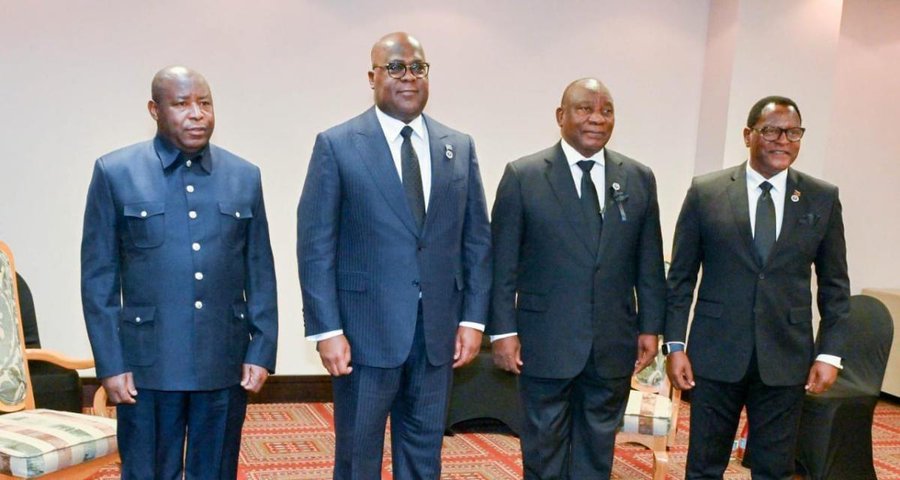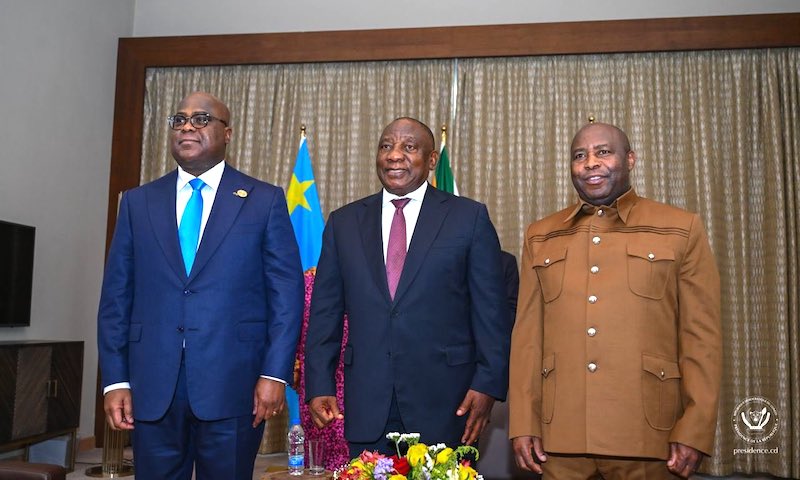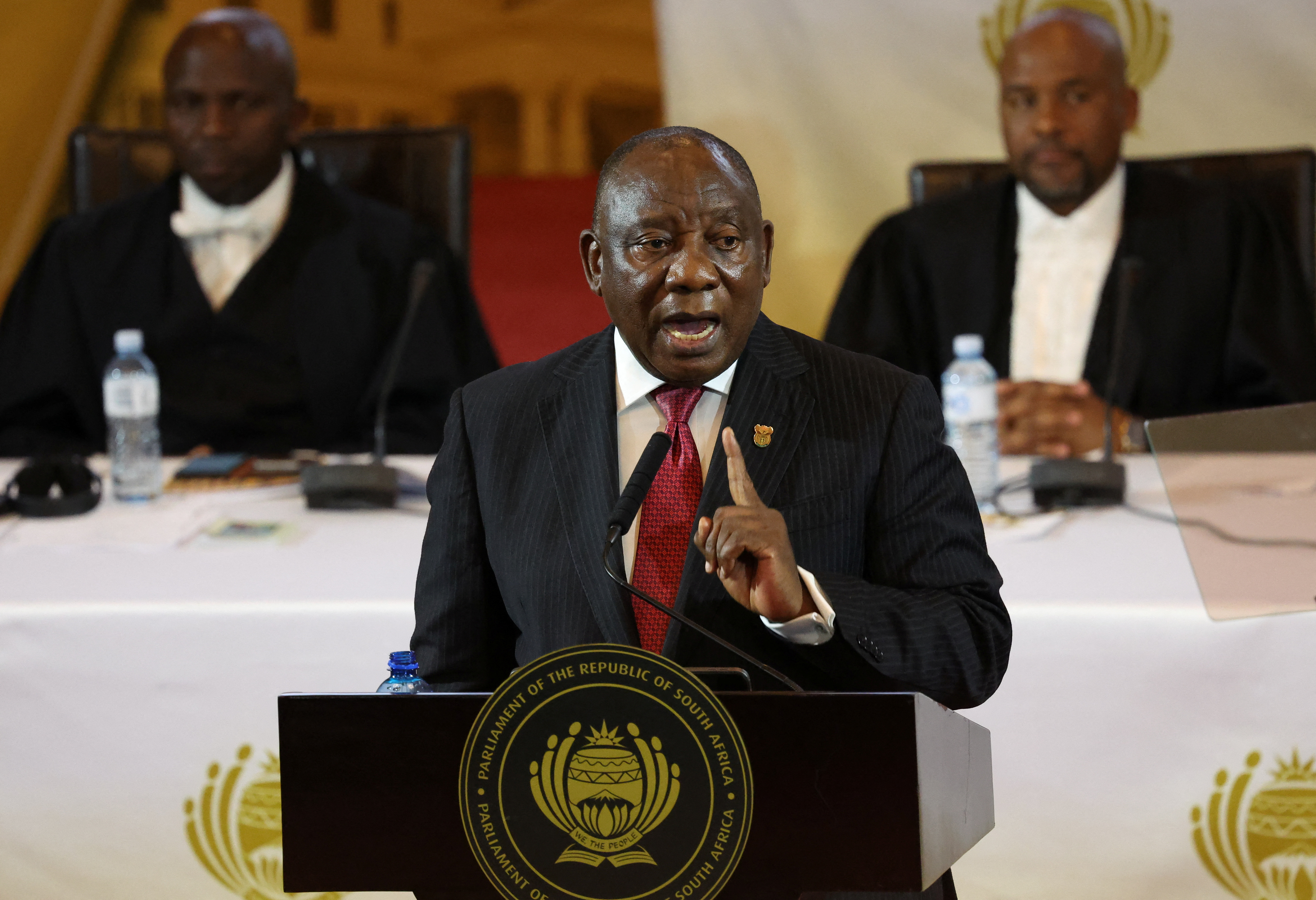Regional
After Ramaphosa’s visit to region, will Southern African troops withdraw from DRC?

After visiting Rwanda for the 30th commemoration of the 1994 Genocide against the Tutsi, South African President Cyril Ramaphosa, visited Uganda on April 15 and 16. During both trips, he said that a political solution is needed to end the deteriorating crisis in the east of the Democratic Republic of Congo where his country deployed more than 2,900 troops as part of the Southern African Development Community (SADC) mission.
"I leave Rwanda with
renewed vigor and intention that we should find a solution - a political
solution - to what is prevailing [in this region]," Ramaphosa told the
media in Kigali, on April 7.
During his two-day visit,
Ramaphosa held a meeting with his Rwandan counterpart Paul Kagame. Following
the meeting, Ramaphosa told media that the people of the DRC yearn for peace
and similarly the people of Rwanda yearn for peace. Therefore, he said, “all of
us combined, including SADC, should work towards installing peace in this
area."
He echoed the same commitment
for peace while in Kampala.
Since the SADC deployed troops
to DRC in December 2023, political analysts have wondered whether the
development will solve the decades-long security crisis in the region, or will
lead to splitting DRC apart.
The Southern African bloc’s
mission was to work with the Congolese army coalition of Burundian troops,
European and American mercenaries, Wazalendo militia groups as well as the FDLR
terrorist group, to fight, solely, the M23 rebels, yet there are over 260
deadly armed groups wrecking in eastern DRC.
Before the SADC forces were
deployed, a number of calls were made warning that only a political solution
can solve the insecurity in eastern DRC, as history proves that military
approaches failed. The Southern African bloc’s leaders turned a deaf ear to appease
Congolese President Felix Tshisekedi, who had already forced the East African
Community Regional Force (EACRF) to leave his country, despite the progress
that was being made under its operations. The troops from EAC had ensured the
M23 rebels withdraw from earlier captured territory and a ceasefire was
committed to. When they left the country, the crisis worsened.
Tshisekedi was not happy with
EACRF because he wanted the force to fight the M23 rebels, and the force
commander refused as his force was deployed to create a buffer zone, which
would have allowed dialogue between the concerned parties to proceed.
SADC’s military intervention
in the DRC was highly criticized for it ignored the M23 rebels’ plight where
they face threats of ethnic cleansing.
By dismissing political
dialogue, Tshisekedi pinned all his hopes on SADC, citing the alleged success
of the Force Intervention Brigade (FIB) from the SADC region in the 2013 battle
against the M23 rebel group.
However, it is clear that
FIB's victory did not translate into an overall success. A decade after the
defeat of the M23, the issues resurfaced, underscoring the fact that the
fundamental cause of the problem was never adequately acknowledged, analyzed,
or effectively addressed.
As a result, the rebels
continue to grapple with an ongoing existential threat and they continue to
fight to defend the rights of their persecuted Kinyarwanda-speaking community.
The question remains whether Ramaphosa, this time, is really convinced that
Kinshasa needs to consider a political solution with the support of the region,
or whether his declarations in Kigali and Kampala were, perhaps, deceitful due
to political interests.
Even before the SADC troop
deployment, Ramaphosa was sure that a military approach will not solve the
DRC’s problem. But he deployed his country’s troops, anyway.
Analysts said that economic
interests were key drivers as Ramaphosa rushed to send troops to eastern DRC.
The South African President pulled all the stops to make the SADC troop
deployment possible despite a number of difficulties including financial issues,
and moved to send more troops than any other country in the 16-member bloc.
Former South African President
Thabo Mbeki said that the DRC should disarm FDLR, genocidal forces who fled to
Congolese territory after carrying out the 1994 Genocide against the Tutsi in
Rwanda, to ensure that peace and stability is achieved in the east of the
country. He stressed that a political solution is “the only way to solve the
problem.”
Although Ramaphosa declared the need for a political solution, sources say that SADC troops and the wider Congolese army coalition keep on advancing, setting up positions for future offensive attacks against M23 rebels.








